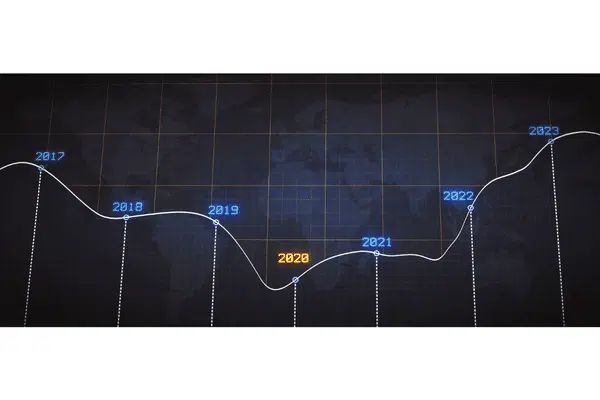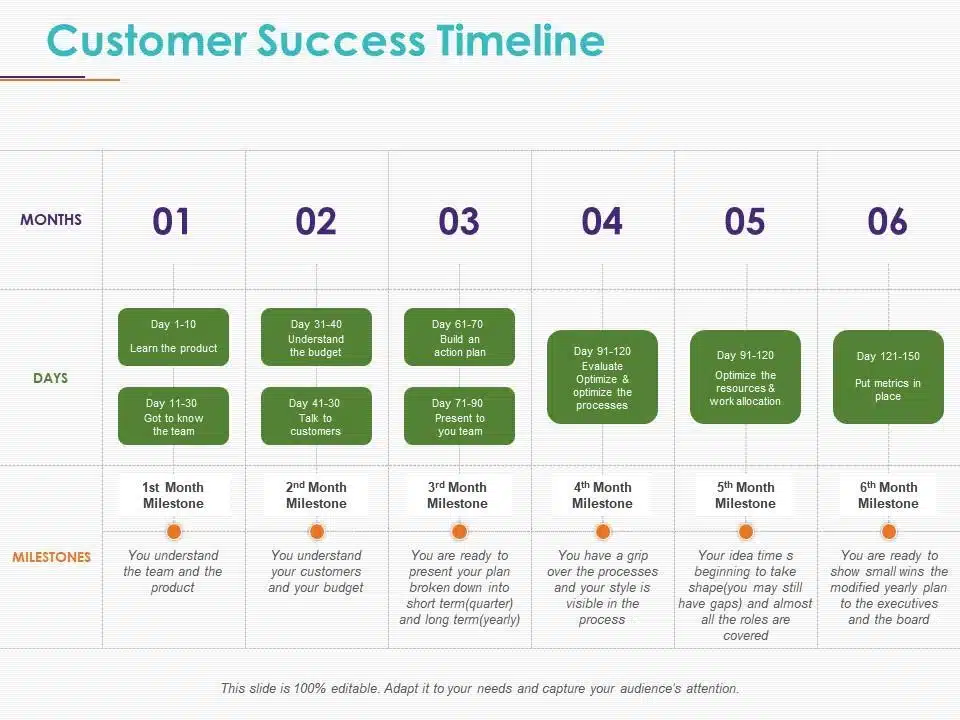A customer timeline provides a clear view of customer interactions with a brand over time. This understanding allows businesses to identify important moments, such as when customers need support, are ready to make a purchase, or may disengage.
Timely and personalized actions based on these insights enhance customer satisfaction and foster long-term loyalty.
Most businesses focus too much on acquiring new customers. They tend to neglect their existing ones.
With a timeline, you will see their interactions with you when they are most active, and what kind of content they respond to best, providing a view of the customer’s entire history.
It’s important to know exactly where your customers are in their journey as it provides invaluable insights into their behavior and preferences.
From identifying key touchpoints in the customer lifecycle to leveraging data-driven strategies for personalization, let’s understand why having a clear picture of your customers’ journeys is important.
Key Takeaways
- A customer timeline is a comprehensive record of a customer’s interactions with a business. It enhances customer service, marketing, and product development through detailed insights into customer behavior and preferences.
- Implementing a customer timeline streamlines internal marketing processes, improves personalized customer service, and enables targeted offerings based on behavior analysis. It also fosters collaboration across business departments for informed decision-making.
- Setting up a customer timeline involves defining customer segments, mapping the customer journey, and strategizing for each stage.
What is a Customer Timeline?
A customer timeline is a detailed record of a customer’s interactions with a business, arranged chronologically, covering key events like purchases, support requests, feedback, and marketing engagements.
These interactions and stages are the first engagement, purchase moments, service or product delivery, and ongoing support.
Businesses can use this information to improve customer service, target marketing campaigns, and even make product development decisions.
So, you must know how to create it the right way.
How to Setup a Customer Timeline?

Here’s a step-by-step guide to creating a customer timeline for your business:
Define Key Stages in the Customer Journey
The first step in setting up a customer timeline is to define the key stages in your customer’s journey. Start by identifying the major phases that customers go through when interacting with your business.
These stages typically include:
- awareness
- consideration
- purchase
- onboarding
- engagement
- retention
However, depending on your business model, you may need to adjust or add more specific stages.
For instance, onboarding could involve steps like account creation, first product use, and reaching out for support. It’s also useful to create customer personas at this stage, as different customer segments may follow slightly different paths.
Having these well-defined stages will give your timeline structure and make it easier to track customer progress.
Gather Customer Data
Once you’ve mapped out the journey, the next step is to gather as much relevant customer data as possible. This data is the foundation of your timeline and should reflect every significant interaction or transaction the customer has had with your business.
You must pull data from key sources like your CRM, email marketing platforms, website analytics, and support ticket systems.
Collect both qualitative and quantitative data—this includes things like customer feedback from surveys, purchase history, support requests, and interactions via email, social media, and chat.
It’s important to focus on time-based events, such as a first purchase, a renewal, or a service request. Be sure to gather communication history, as it may provide valuable insights into the customer’s satisfaction or unresolved issues.
Once all this data is in hand, you’ll have a comprehensive view of customer activities.
Organize Data Chronologically
After gathering the necessary data, it’s time to organize everything in chronological order. Arranging the data by date allows you to see the sequence of customer interactions and understand how they progress over time.
For each key interaction, ensure the timestamps are accurate and consistent. You can also group similar types of events together to detect trends or patterns, such as how often customers make a purchase after a marketing email or how frequently they reach out for support.
Segment your customers if necessary—high-spending customers, for example, may follow a different timeline than those who make infrequent purchases.
Prioritize the most critical interactions so you can focus on what matters most, such as when a customer converts from a free trial to a paying customer or when they engage with your support team, ensuring every conversation is accounted for.
A well-organized chronological view of this data will allow you to draw meaningful insights from your timeline.
Visualize the Timeline
A visual timeline helps make sense of the data by presenting it in a way that’s easy to interpret. Use a timeline tool or software—many CRM platforms like HubSpot and Salesforce offer features that can do this automatically.
If you prefer a simpler approach, Excel or Google Sheets can work for smaller datasets. Your timeline should clearly show key milestones and moments of engagement, such as when a customer made their first purchase or requested support.
You might also want to highlight any turning points where the customer’s journey significantly changed, like when they upgraded their plan or started making frequent support requests.
If you manage multiple customer segments, it’s a good idea to create separate timelines for each group or overlay them for comparison. The goal is to create a user-friendly, visual representation of the customer journey that highlights key events and potential patterns.
A Simple Customer Timeline View

Who needs access to your customer timeline?
- Customer service representatives
- Salespeople
- Marketers
- Product managers
Examples of Events You Should Track Within Your Timeline
Customer events, also known as customer-acquisition events, are key moments in the customer journey where a brand has the golden opportunity to make a lasting impression. Using notes to capture subtle details from these events can provide additional context and improve future interactions.
- First purchase
It is the micro-moment when a customer first buys your product or service. It’s an important opportunity to make a good impression and start on the right foot.
- Free trial sign-up
If you offer a free trial of your product or service, this is the event that starts the clock ticking. It’s crucial to ensure your free trial is high quality and easy to use so that customers will want to stick around once it’s over.
- Customer service interaction
Every time a customer contacts your customer service team, it’s an opportunity to improve their experience. Track these interactions so you can identify patterns and make improvements.
- Product return
A product return is never a good thing, but it can be an opportunity to learn more about your customers’ wants and needs. Use this information to make changes to your product so fewer people feel the need to return it.
It is the moment when a customer stops doing business with you. It’s important to track this event so you can understand the full context and take steps to prevent it in the future.
Conclusion
Understanding your customer’s history is the key to unlocking the value they hold for your business. By tracking customer events and identifying patterns, you can improve your business operations and create a lasting relationship with your customers.
FAQS
Here are frequently asked questions about creating a customer timeline to help you further in your research.
What is the purpose of a timeline in business?
Timelines are essential for setting expectations among stakeholders, creating visibility for different departments, and tracking progress of a project.
They help to visualize the progress of a project by providing steps and expected timelines.
They also provide key insights into potential problems and opportunities that can arise during the course of the project or task at hand.
Timelines are useful not only within business operations, but also externally in terms of marketing campaigns/projects and public outreach initiatives.
Are there any limitations when using a customer timeline?
While there aren’t any hard limits in terms of what types of data you can include in a timeline – certain challenges may arise.
It depends on how much data you collect about each customer and how often it needs to be refreshed/updated in order for it to remain relevant/accurate over time.
Additionally, because every organization has unique requirements when it comes to capturing data points related to its customers, some may find that building out custom solutions better meet their specific needs than off-the-shelf tools are able to provide.
Does using a Customer Timeline require technical skills?
Not necessarily.
Many tools are designed with ease of use in mind such that anyone familiar with basic software applications should be able to quickly get up and running without needing additional support from technical experts (i.e., engineers).
That said, depending on the complexity of the data being tracked certain advanced features may require deeper technical knowledge than what most users possess but this would largely depend on individual circumstances related specifically to each organization’s setup/requirements.